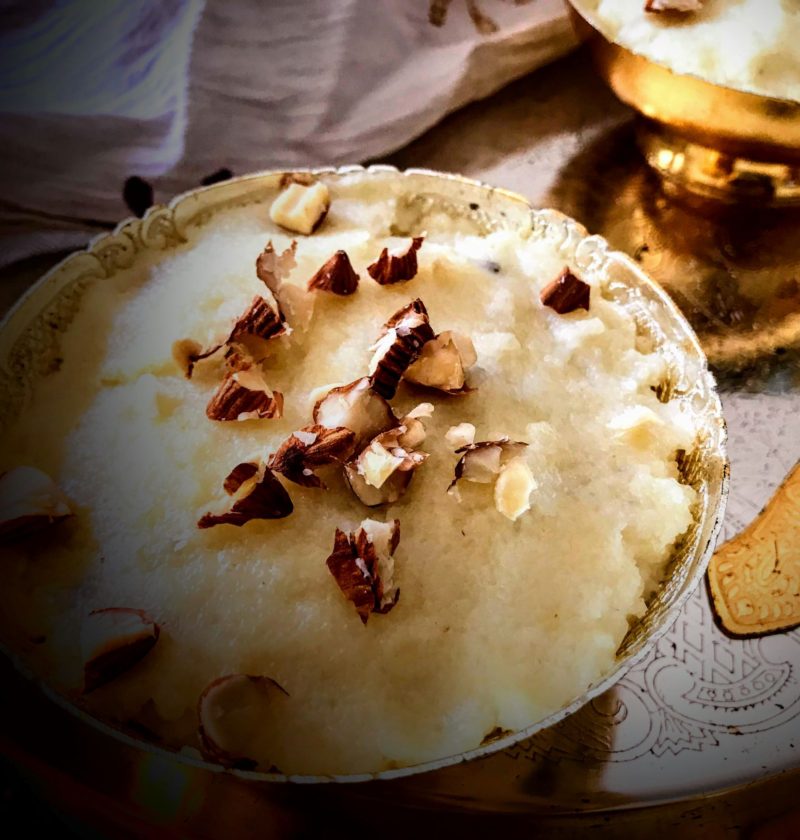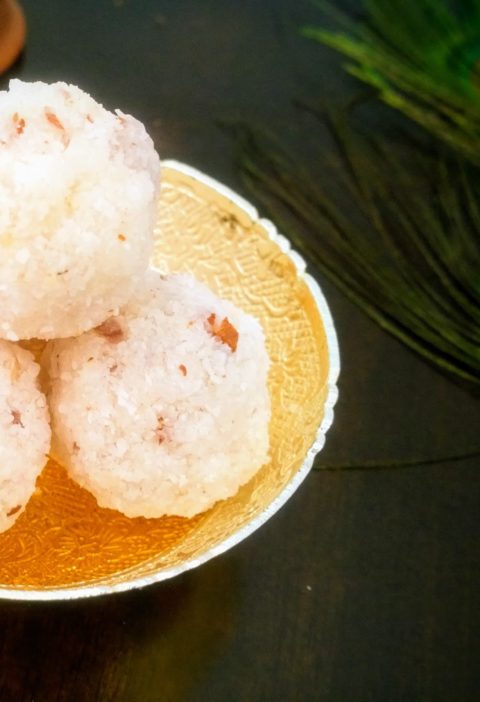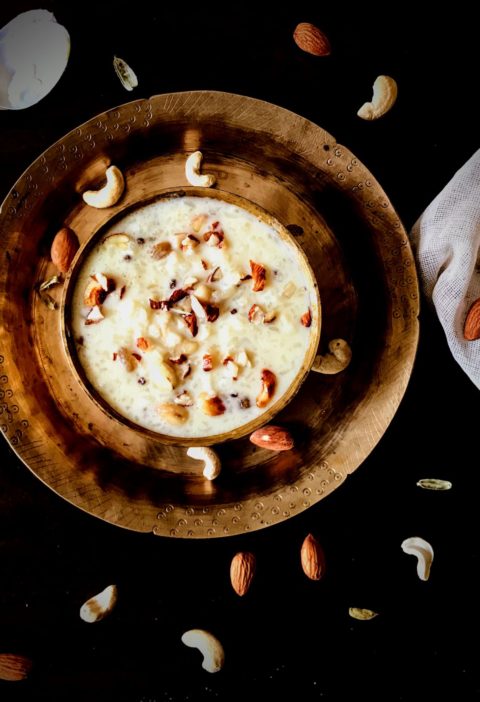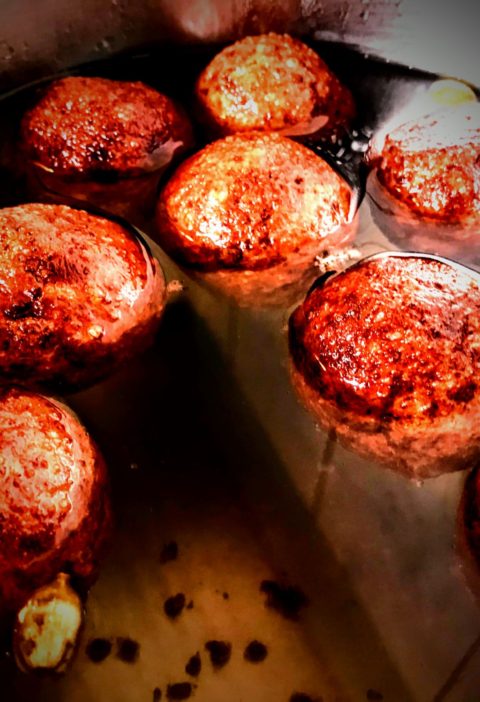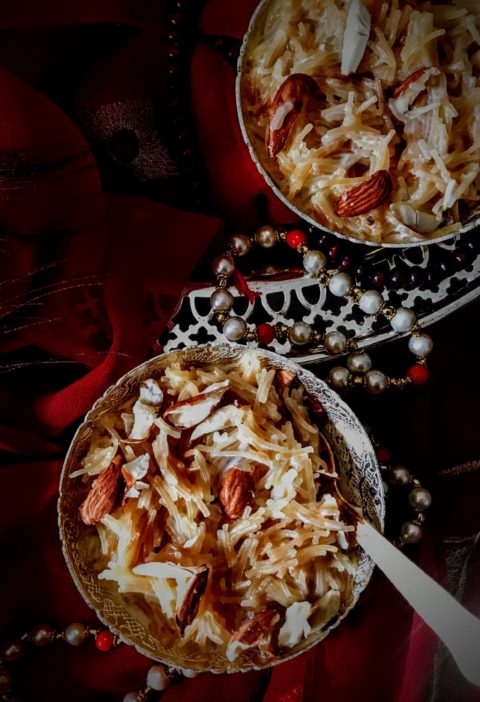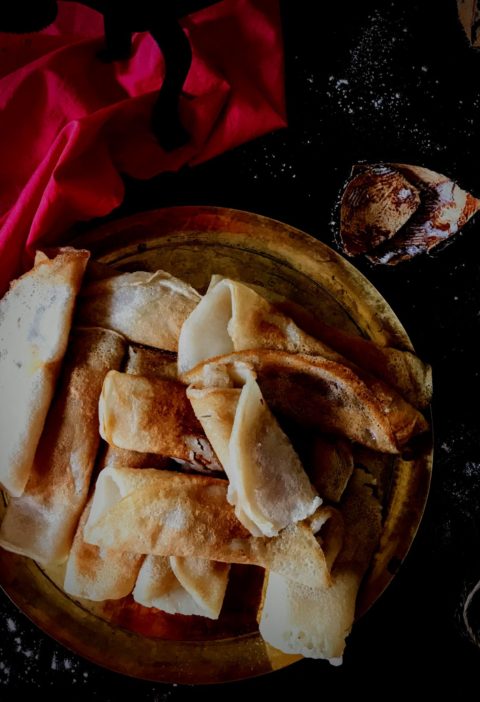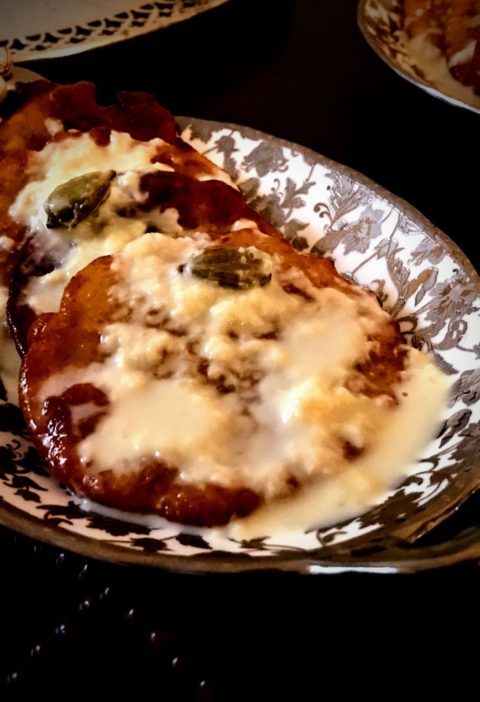There is a reason why a box of sweet or ‘mooh meetha’ is so important in our culture. Why any course is incomplete without concluding the same with a dessert. The reason has to be strong, or else the mere mention of Bengali Roshogullas, or Mathura ke Pede, or Mysore Pak, would not have pushed those happy strings in our mind. Furthermore, this emotion pertaining to sweet is not confined to any area or culture. The strong connect of human emotions and sweet is relevant to the entire mankind. Or else, the popular Valentines gift would have also included a jar of paprika and would not have confined to box of chocolates.
Few research studies say, the root to this inseparable bond goes back to our hunter-gatherer ancestors, who relied on riper fruits because it had more sugar content than unripe fruits, and therefore supplied more energy.
Since we have established the fact that humans have a soft spot for things that taste sweet, then it is nothing but evident that the history of sweet and sweet dishes should be traced back since the beginning of human existence. Though not clear since when, but one of the dishes which has found its reference in ancient Vedic text and scripture is Kheer, or Payesh in Bengali (derived from the Sanskrit word kshirika or payasam, which, means a sweet dish made with milk). There is no dish in the Indian cuisine that is more rooted to our culture and tradition than payesh. From simple celebrations to festivities to religious ceremonies, this dessert is unavoidable. Being an inevitable dish for annaprashana (weaning ritual of an infant) or Janmatithi (birthday) it is so much ingrained in our tradition that no auspicious occasion is complete without serving this dessert.
So, as we can see that payasam or kheer or payesh is the most popular dessert across the country and has been around since time immemorial. Hence, this is obvious that since its inception, Payesh or Kheer must have gone through couple of evolution or modification depending on the geography, availability of food grains and other ingredients. One such modification to payesh or kheer is Sujir Payesh or Semolina pudding. Sujir Payesh or Semolina Pudding is a popular dessert in Bengal, where the dish is prepared by boiling milk, semolina and sugar.
This semolina pudding is not only a popular dessert, but is also a comfort food for babies especially during the weaning periods, when the babies are slowly weaned from breast milk to food grains. The dish is really simple and takes least time for preparation utilising minimal ingredients.
So, whenever your sweet tooth emits the signal for emergency, here is your quick and simple answer 
Check out this link for more desserts recipes.
Recipe: Sujir Payesh Or Bengali Semolina Pudding
Cooking Time: 20 minutes (approx.) Equipment used: Kadai/Pan and a turner Yield: 6 people
Ingredients:
- 1 tablespoon ghee
- 1 bay leaf
- 1 cup semolina
- 500 ml milk
- ½ cup sugar
- ½ tablespoon almond (cut into small pieces)
- ½ tablespoon raisins
- Pinch of camphor powder
- ½ teaspoon crushed cardamom pods
Method:
- Heat a pan and add ghee
- Temper the ghee with a bay leaf, when the ghee is hot
- Add semolina into the pan and fry the semolina with ghee for a while (around two minutes), on low flame, till the semolina granules mix with ghee properly
- Add sugar followed by milk, while stirring semolina continuously
- Remove the pan from heat, when semolina is boiled
- Add crushed cardamom pods and camphor powder
- Garnish the dish with almond pieces and raisins
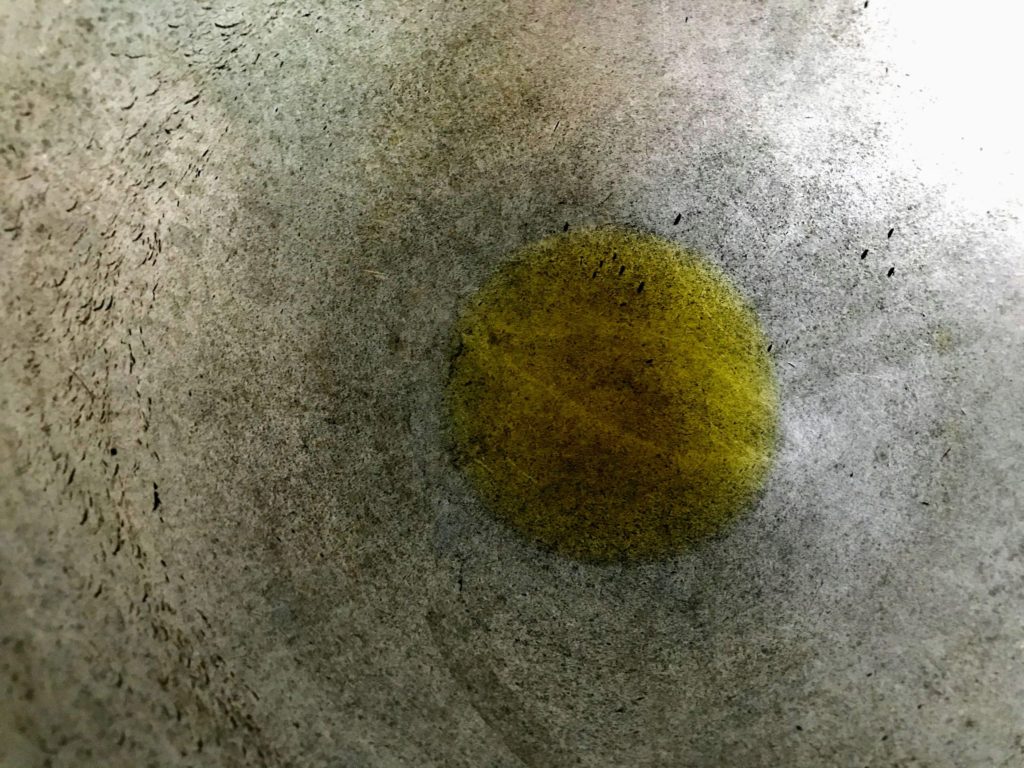
Heat 1 tablespoon ghee in a pan.
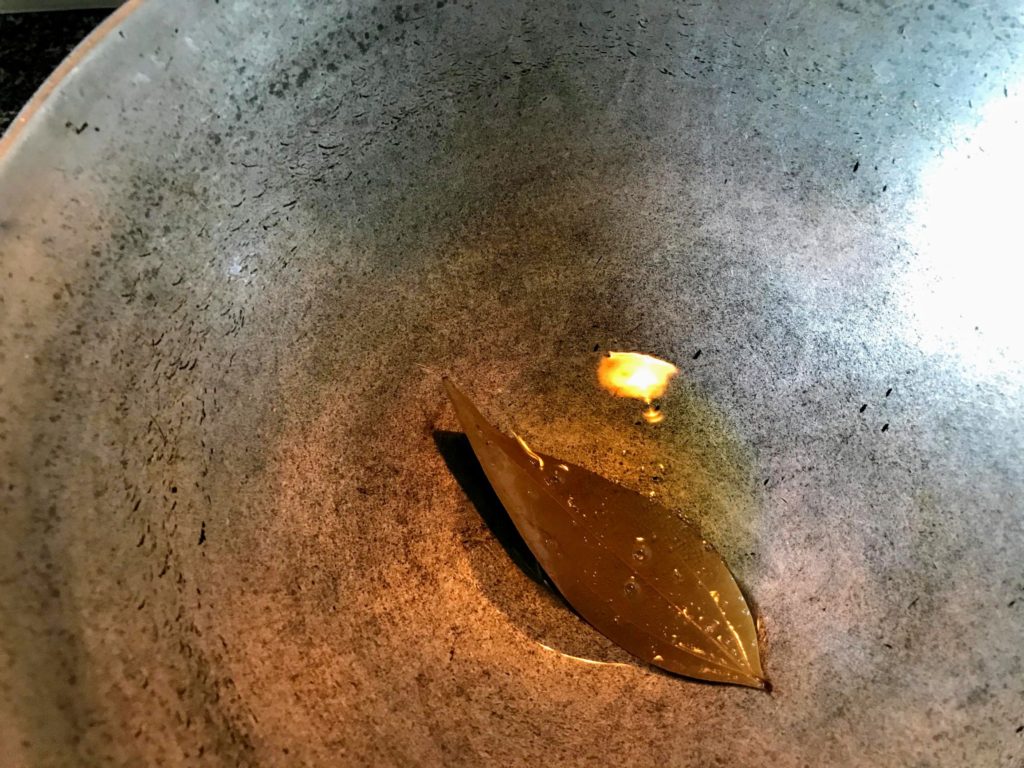
Temper the ghee with bay leaf.
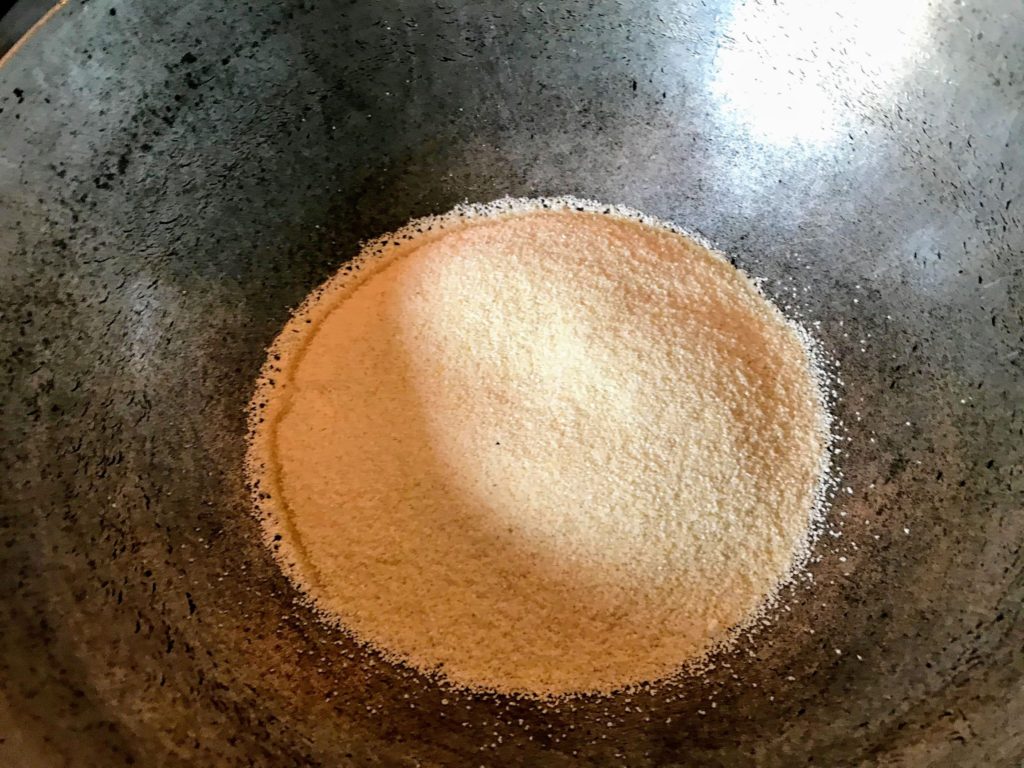
Add semolina and fry the semolina with ghee for a while.
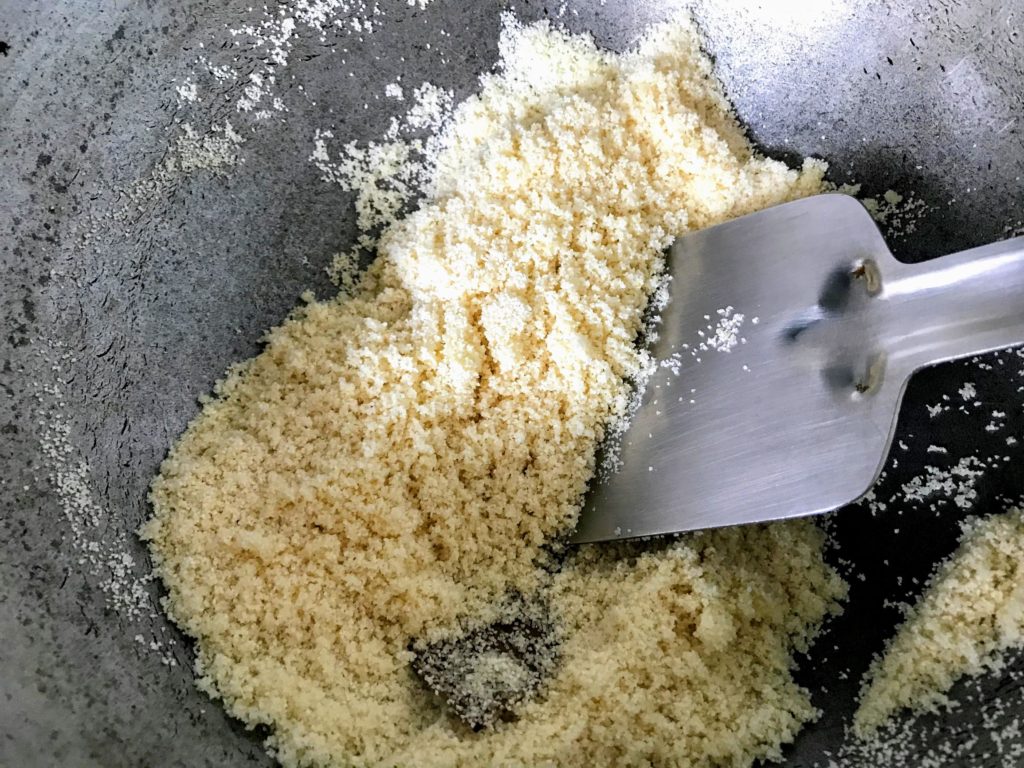
Fry the semolina till semolina granules mix with ghee properly.
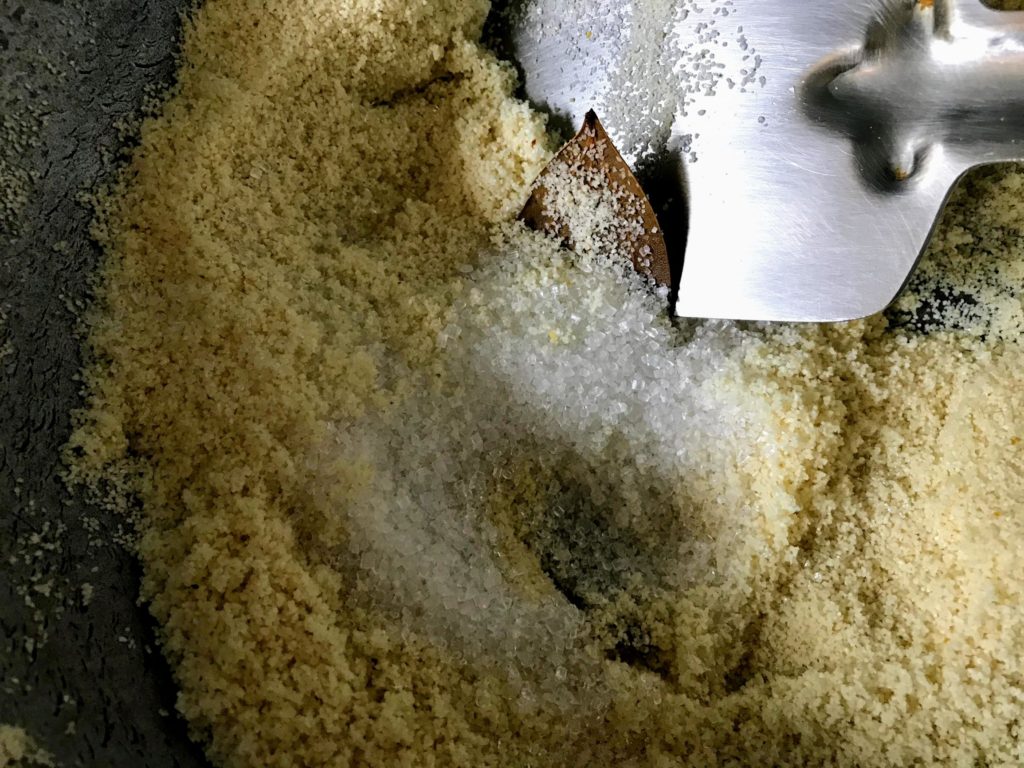
Add sugar to semolina while stirring the semolina continuously.
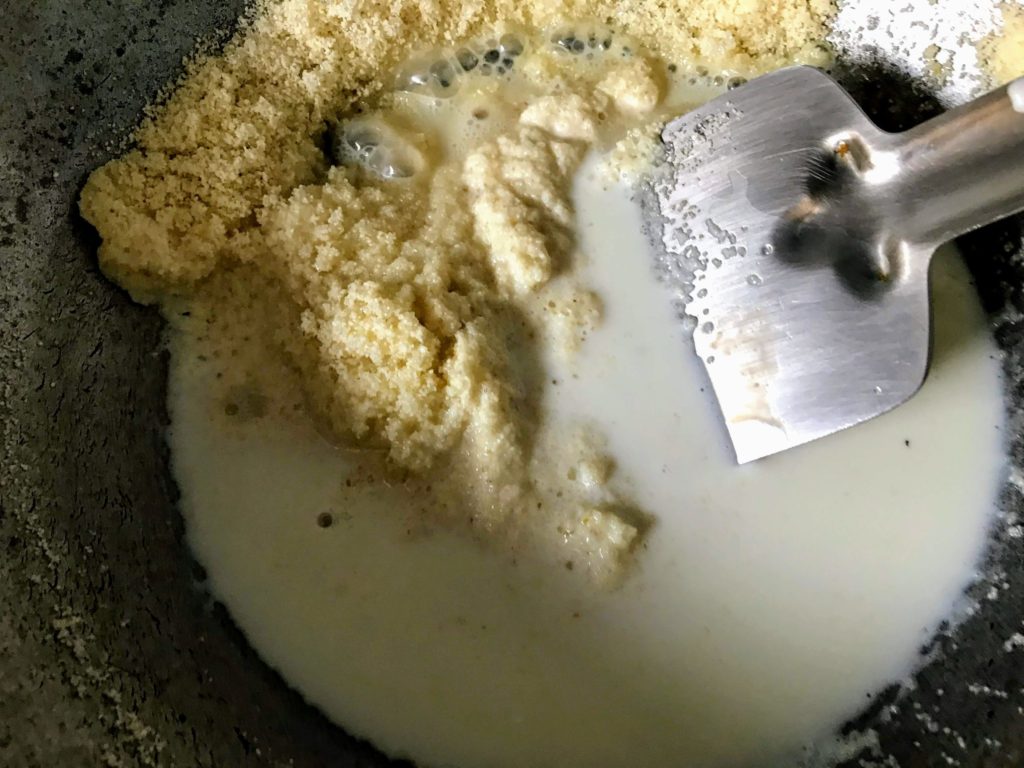
Add milk cup by cup.
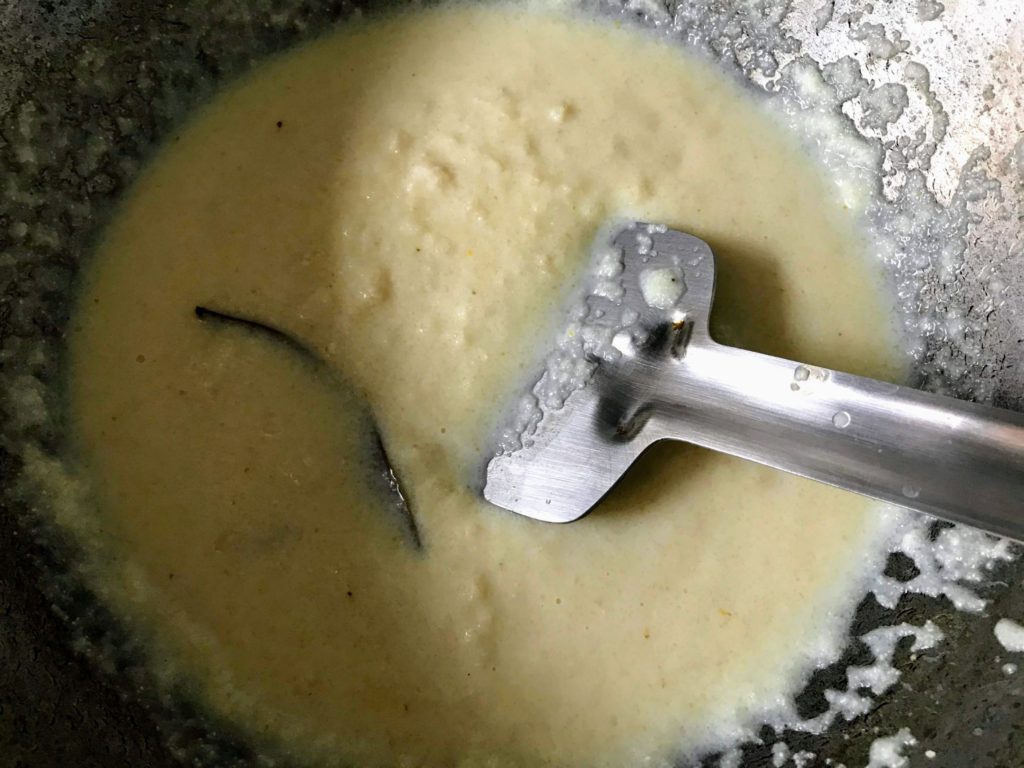
Mix the milk while stirring semolina continuously.
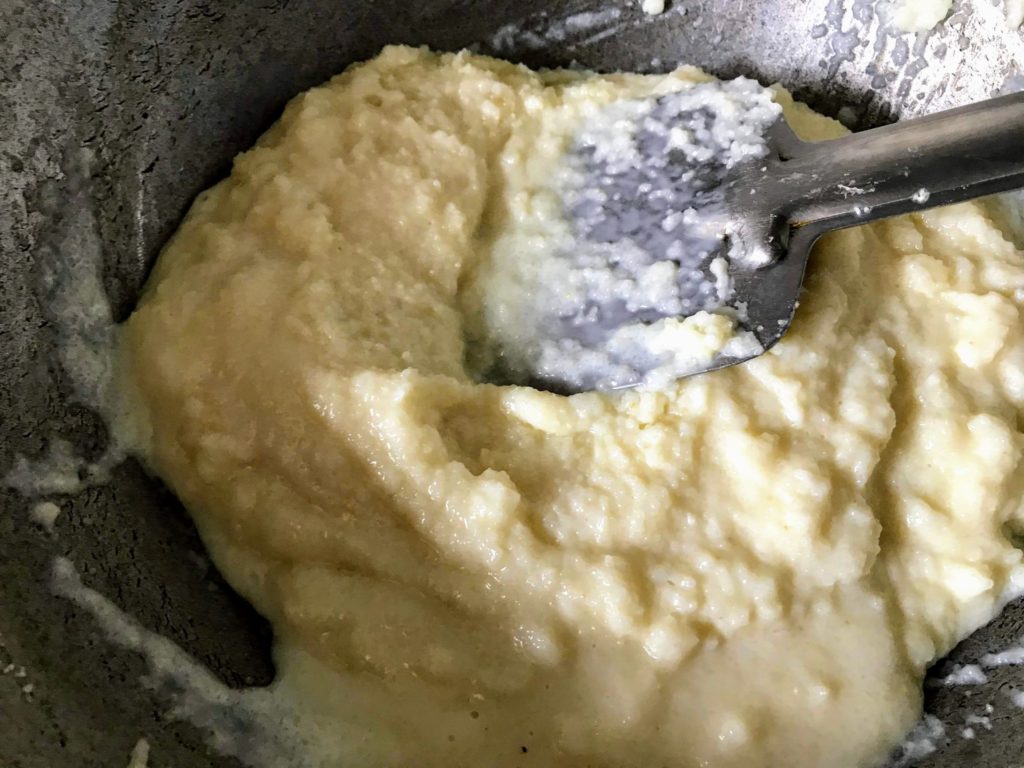
Remove the pan from heat when semolina is boiled
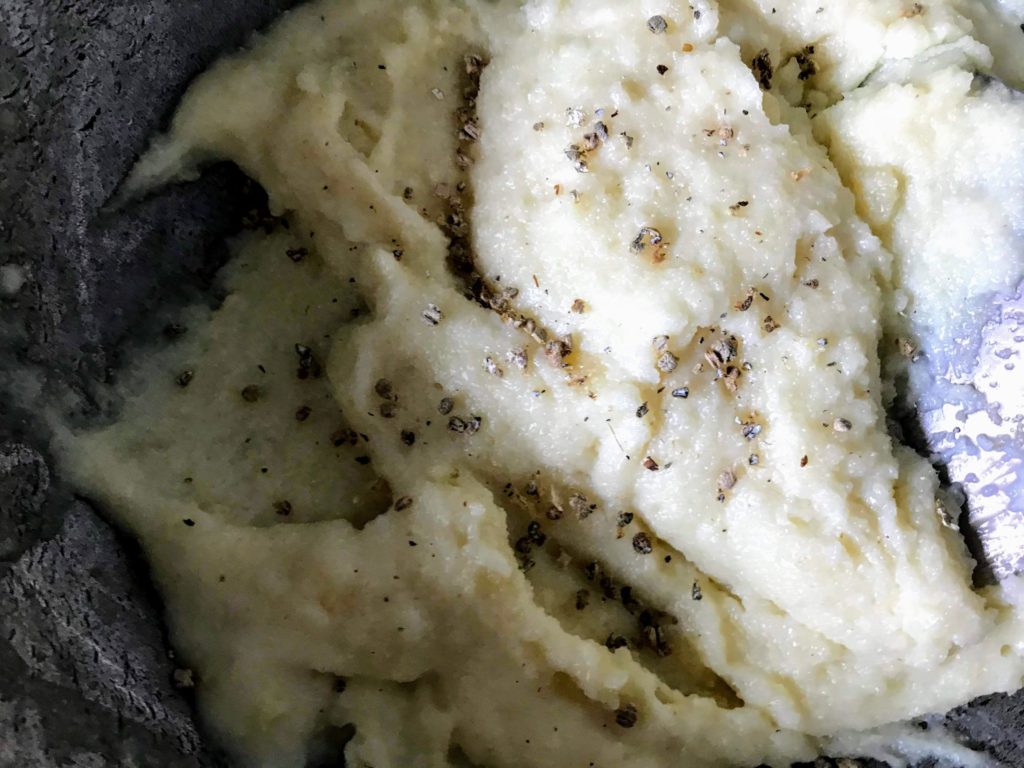
Add crushed cardamom pods.
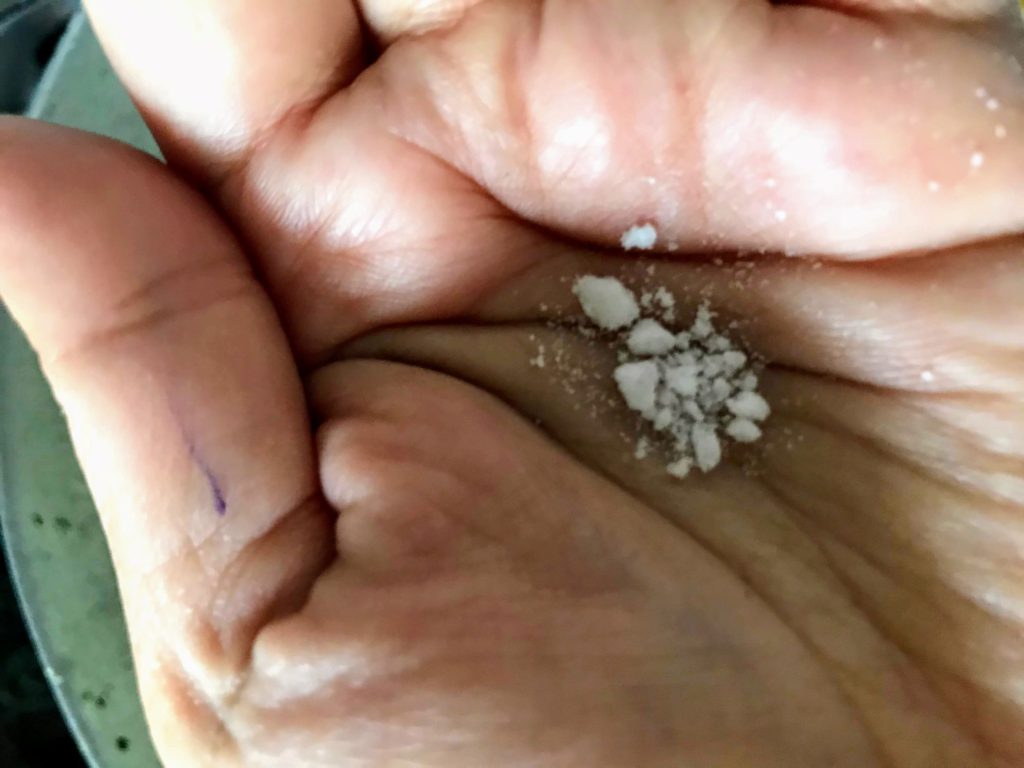
Add pinch of camphor powder.
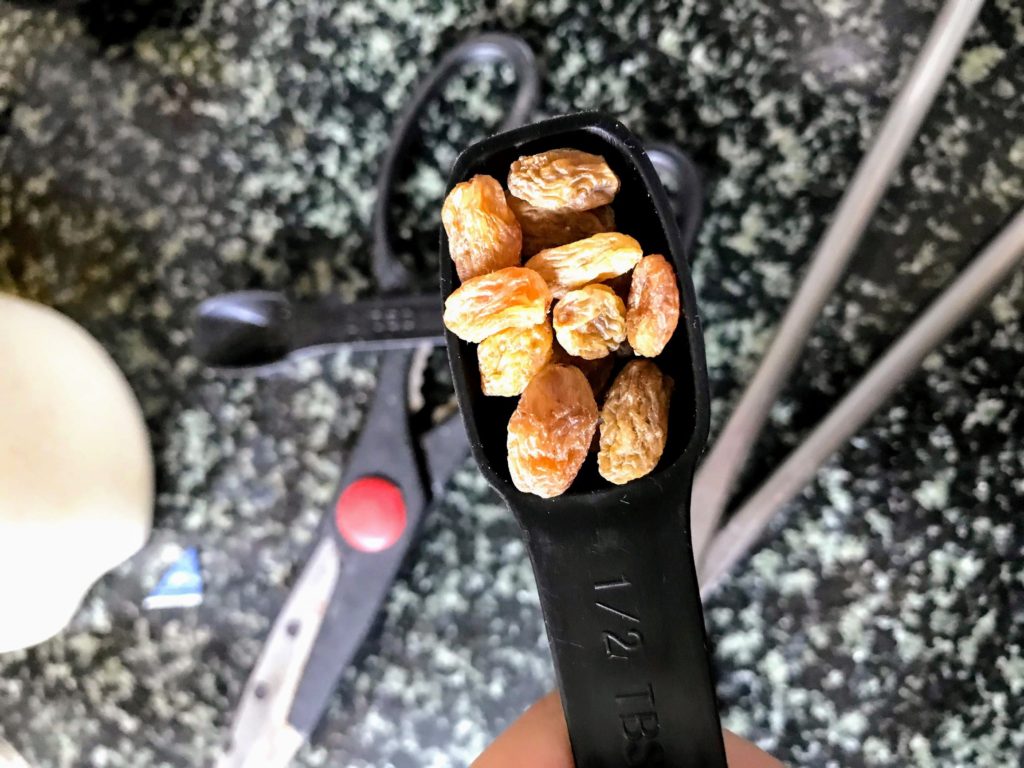
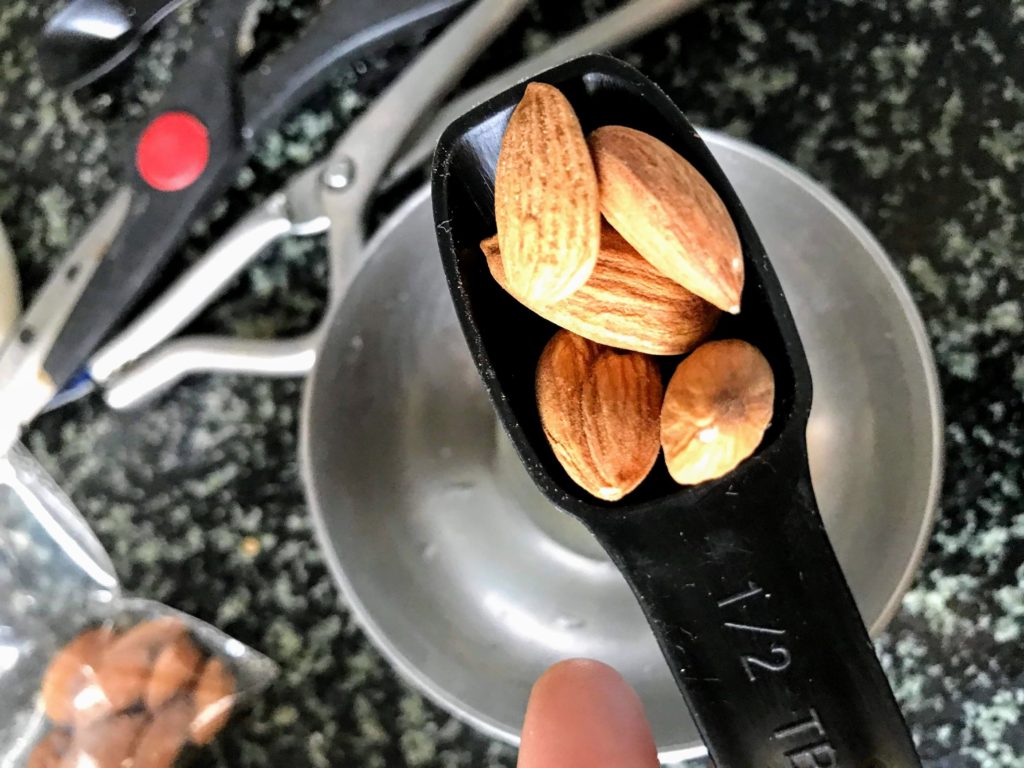
Add raisins and almond pieces for garnishing.
Tips:
- Don’t stir semolina for long in ghee. The semolina granules should retain the white colour
- Add milk cup by cup into the pan, so that semolina does not soak up the entire liquid
- The entire process requires continuous stirring so that no lump is formed
- Serve the dish immediately or add little bit of milk before serving. As semolina will soak the entire milk, the dish might appear dry or hard if served later
Please note: Few information in this blog have been sourced from Wikipedia
